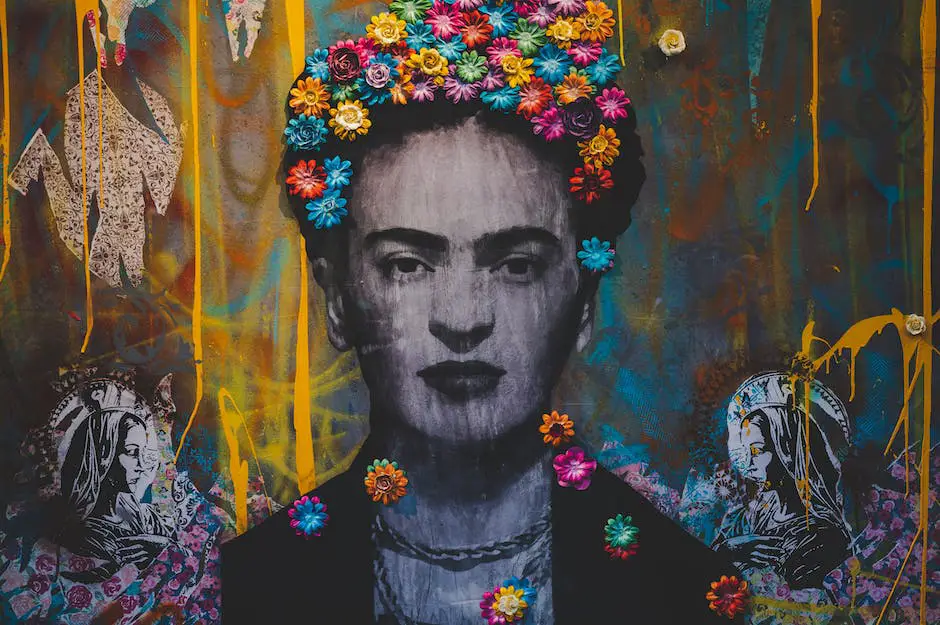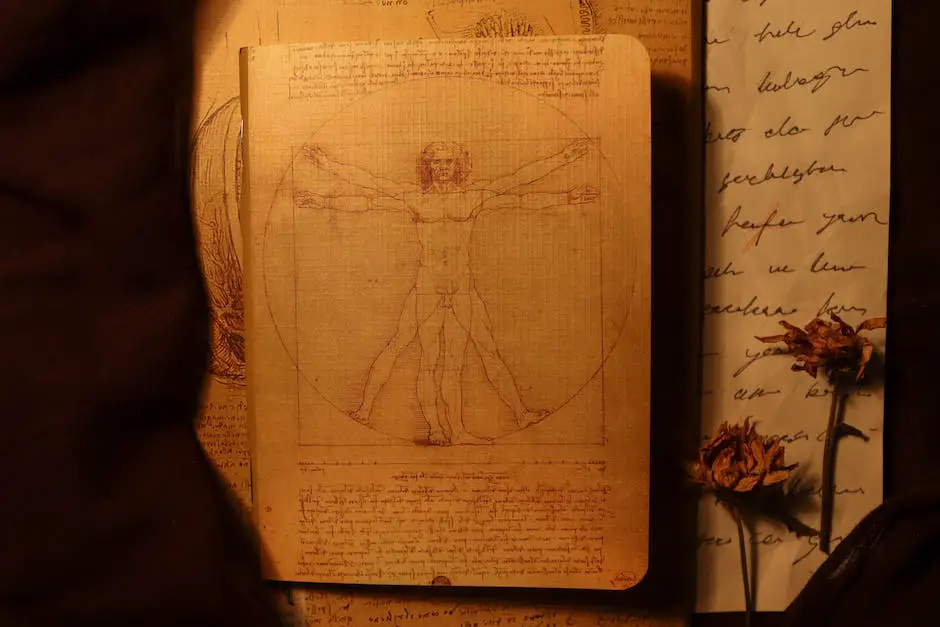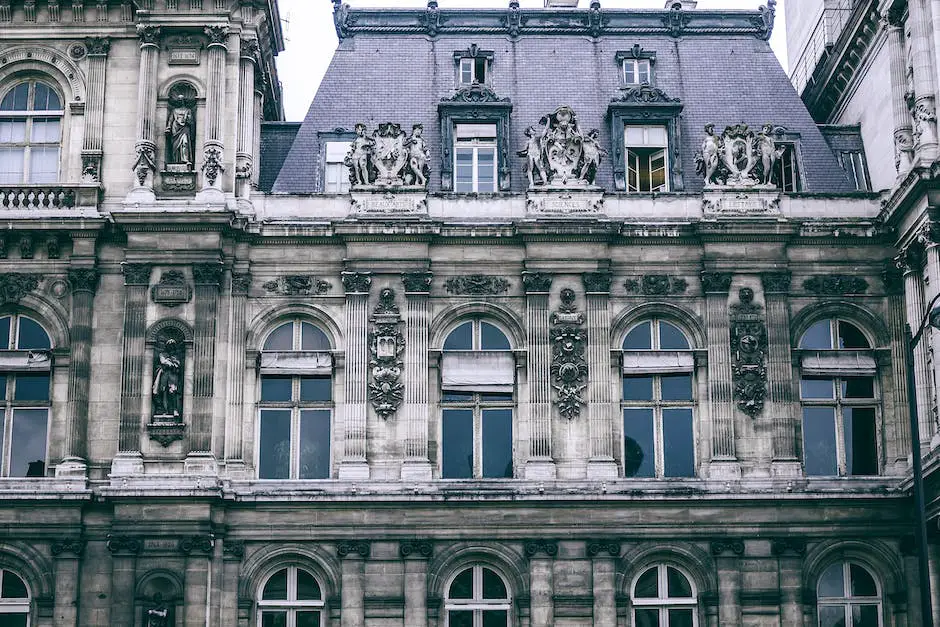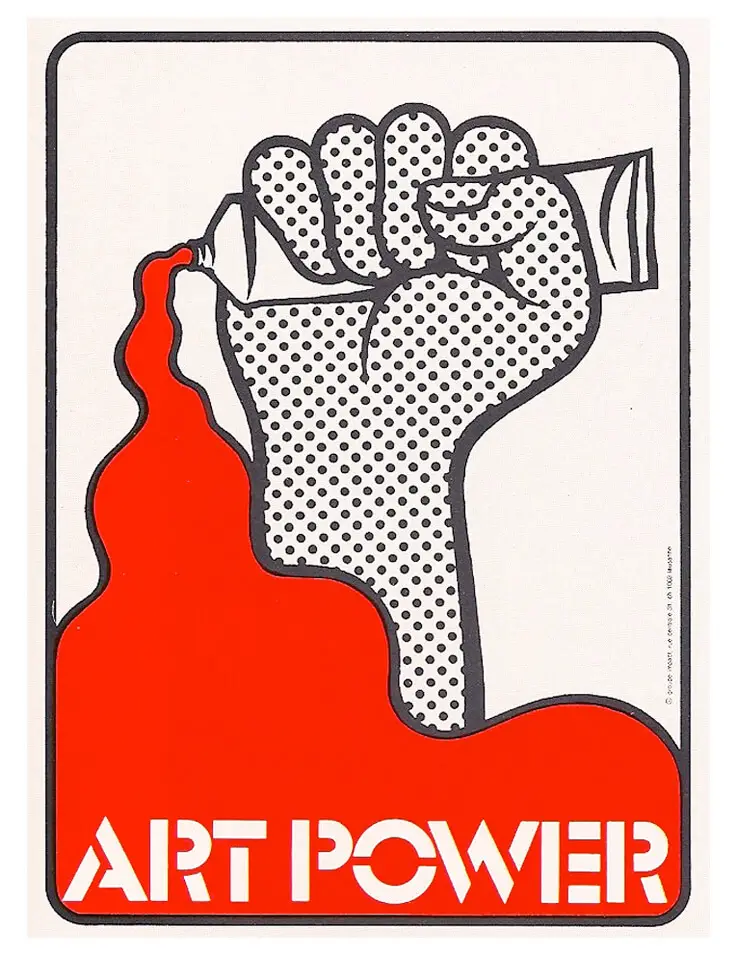Exploring the Aesthetic Beauty of Renaissance Art

Encompassing the passions and politics of the erstwhile era, as well as heralding a revolutionary era filled with colossal breakthroughs in art and culture, the Renaissance represents a poignant period in global history. We commence our exploration by tracing the origins of the Renaissance era, pertinent events which ignited the shift from Medieval to Renaissance art, and the notable figures who stoked the flames of this grand transformation. As we traverse through the labyrinth of history and into the vibrant world of these Old Masters and their iconic creations, we delve into unique artistic concepts and features that have become the identifiable cornerstones of the period, from the use of linear perspective to the embrace of humanism.
Origins of Renaissance art
When Art Rebirthed: The Cradle of Renaissance and its Key Medallions
Winds of change swept the world during the late 13th to early 16th century, giving birth to a period lovingly christened the Renaissance. It signalled a transformative pivot from the rigid Middle Ages’ art to a more dynamic and lifelike artistic expression. Dare to dive into the glorious past to uncover the true cradle of the Renaissance era and the significant events that painted its dazzling dawn.
Cherished as the nurturing womb of the Renaissance, the charming city of Florence nestles in the heart of Italy. The Florence Cathedral stands testament to this, embodying Gothic Revival architecture’s grandeur. Ornate descriptions etched into the cathedral’s towering facades narrate tales of human struggle, framed perfectly in the very heart of the cradle of the Renaissance.
Simultaneously, yet independently, Siena, Italy’s medieval gem, contributed its flavour to this fascinating widespread cultural change. Remarkably preserved through the ravages of time, Siena’s streets still resonate with echoes of the historical evolutions that fuelled the inception of the Renaissance.
A crucial contributor on this incredible journey was the glorious Republic of Venice. Known for its bustling trade and vibrant culture, Venetian painters embraced the changing tide confidently. Their canvas burst with a unique combination of Byzantine and Islamic artistic hues, as seen in the iconic Basilica di San Marco.
Key events that painted the initiation of the Renaissance Art echo loudly through the hallowed halls of history. It was the conquering of the Byzantine capital, Constantinople, in 1453, which ushered in an influx of Greek scholars into Florence. With them, they brought ancient Greek and Roman art, which heavily influenced the artistic aesthetics of the time. This infusion of the old with the new created an inspiring melting pot of styles and techniques ripe for evolution.
However, the real game changer, which made the Renaissance a phenomenon to remember, was the invention of the movable type printing press by Johannes Gutenberg in the mid-15th century. This not only made art and literature accessible to the common folks but also catalysed the rapid dissemination of ideas, leading to an unparalleled explosion in creativity and experimentation.
Arguably, the adornment of the Sistine Chapel’s ceiling by Michelangelo in the early 16th century signified the zenith of the Renaissance Art. The magically inspiring narratives etched onto the Chapel’s ceiling, showcasing stories from the Book of Genesis, exhibits the birth of a new wave in artistic expression; one revelling in intricate detailing, expressive characters and unprecedented dynamism.
These were the birthplaces and key events that marked the beginning of Renaissance Art – a period in history when art threw off its shackles, illuminating the world with humanist and enthusiastic colours. As we wander through Florence’s hallowed streets or gaze upon the Sistine Chapel’s ceiling, we are reminded of the power of transformation, the beauty of creativeness and the enduring allure of the Renaissance period.

Key concepts and features of Renaissance art

Notable artists and their works
Advancing beyond the boundaries of the aforementioned subjects, we take an artful dip, not just into cities, occurrences, or significant developments, but into the lives of those who dared to reimagine the world around them. These revolutionary seekers are none other than the trailblazers of the Renaissance era. The creators of definitive works that draw in and mesmerise seekers of beauty, wisdom, and stirring visual narratives from all corners of the earth.
Leonardo da Vinci, widely acknowledged as the epitome of a Renaissance man, boasted an artistry in drawing, painting, and sculpture that was matched by his capabilities in science, music, and invention. A revered figure particularly for his depictions of human anatomy, one of da Vinci’s most iconic works is the ‘Mona Lisa.’ Considered the epitome of art meeting science, the subtle smile and enigmatic eyes of the lady in the portrait have captivated minds for centuries. Such was da Vinci’s creativity that the artistic and scientific communities still remain inspired by his vast catalogue of notebooks detailing observations, inventions and musings.
Venturing from the canvas of the Mona Lisa, next we encounter the magnificent lines of the ‘Vitruvian Man,’ another of da Vinci’s definitive works. This sketch was drawn around the same time as the Mona Lisa and exhibits an artistic exploration emphasising the ratio and symmetry in the human body, two elements the Renaissance held in high esteem.
On another creative horizon, the inquisitive narrative storytelling method of Sandro Botticelli stands out. A significant figure during the Early Renaissance, Botticelli’s work ‘Primavera’ is highly prized. Gazing upon it, one witnesses an allegorical story born of mythology unfold in a peaceful wooded setting. Storytelling, the use of symbolism, the beauty of nature – all these elements commingle in a single frame, inviting viewers into a world constructed by Botticelli’s passion and unique visual conception.
Further down this artistic chronicle, we encounter the celebrated work of Raphael – ‘The School of Athens.’ This fresco, located in the Apostolic Palace in the Vatican, reveals another facet of Renaissance artistry – the interplay between art and philosophy. Showcasing a gathering of great minds from different periods, it epitomises the Renaissance emphasis on classical learning and philosophy. The dynamic characters and architectural depth transport the spectator thousands of years into the past, grounding the artwork in a humanistic authenticity beloved by Renaissance patrons.
And lastly, the name synonymous with perspectival ingenuity in art – Filippo Brunelleschi. The Renaissance would not be the same without referencing Brunelleschi’s Dome of the Florence Cathedral. This engineering marvel, influencing a future generation of dome buildings around the world, encapsulates the Renaissance’s spirit of exploring new frontiers.
Thus, embedded in the grandeur of the Renaissance period, amidst its magnificent marbles and canvases, a cascade of revolutionary ideas is unveiled. Be it da Vinci’s anatomically precise drawings, Botticelli’s vivid storytelling, Raphael’s philosophical discourses, or Brunelleschi’s architectural prowess, they all symbolize the genius of Renaissance trailblazers. Each work a timeless testament to their era’s imaginative exploration and keenly observed understandings of humanity’s place in the world.

Influence of Renaissance art on subsequent art movements
The Renaissance period sparked a radical shift in how we perceive and craft art. Its breath-taking blend of beauty, philosophy, and craftsmanship carved a path of exploration and creativity that future art periods naturally followed.
To understand the influence of Renaissance art on subsequent art periods, we need to scratch beneath the surface of the canvas. Renaissance art introduced the use of perspective, providing a sense of depth and realism of three dimensions on a two-dimensional platform. This revolution was a paradigm shift that later artists would adopt and refine in the Baroque and Rococo periods. Artists like Caravaggio and Bernini wielded perspective to captivate the viewer’s attention with a dynamic interplay of light, shadow and drama—a technique known as chiaroscuro.
One cannot discuss the impact of Renaissance Art without the accurate portrayal of human anatomy. Pioneers of the period like Leonardo da Vinci, with his scientific approach and meticulous annotations on his sketches, opened a window to human biological nature, transforming how bodies were represented in art forever. This commitment to physical accuracy island-hopped across periods such as Baroque, Neoclassicism, and beyond, informing what would later come to define Realism.
Renaissance artists courted nature, placing it under a microscope, exploring its complexity, and marvelling at its perfection. This appreciation for natural beauty blurred the line between art and science. Flowering trees, ornate gardens, and stunning landscapes would later be prominent features of Romantic art, as well as the Naturalist and Impressionist movements.
Renaissance art forms bristled with narrative storytelling. Botticelli’s ‘The birth of Venus’ or ‘Primavera’ were not simply visually stunning but painted a vivid story embraced by the viewer. This emphasis on narrative was picked up by later periods like Romanticism, with its fascination for epic tales, mythology and emotional expression.
The power of symbolism was another innovative feature of the Renaissance, intended to convey hidden messages and philosophical concepts. This use of symbolism became a hallmark of movements like Surrealism, signifying the depth of thought and contextual complexity present in art.
Alongside the aesthetic innovation, the Renaissance period also brought a potent philosophical renaissance. A symbiotic relationship between art and philosophy emerged, epitomized by Raphael’s fresco, ‘The School of Athens.’ The figures of Plato and Aristotle at the center point signified the philosophical foundations of art, which would inspire an intellectual thread that ran through periods like the Enlightenment.
The footprints of Renaissance masters are noticeable in the sands of following art periods. Leonardo da Vinci’s well-rounded genius, Botticelli’s narrative sensibility, Raphael’s symbolism, and Brunelleschi’s structural innovation fertilised the creative soil of other periods. Later artists didn’t just appreciate these Renaissance contributions—they continued the dialogue, adding their accents, reflections, and refractions.
The Renaissance period was undeniably a springboard, launching us into a realm of artistic grandeur and exploration never experienced before. Its influence resonates through the echoes of time, reverberating in the present, and likely to inspire the future of art. So let’s keep the spirit of Renaissance alive, pushing boundaries and drawing inspiration from our environment—the way those remarkable artisans once did.
We might just make something extraordinary.

Renaissance art in the modern world
Renaissance art has left a rich legacy that continues to infiltrate modern art practices, and it has heavily influenced the evolution of art within society. Glimpses of the Renaissance can be seen imbued in contemporary works, indicating that the era’s spirit is far from outdated. This isn’t surprising as the Renaissance was a period that celebrated human potential and showcased the beauty of the world in unprecedented ways.
One impactful legacy spawned from the Renaissance is the adoption of perspective. Developed by Filippo Brunelleschi, linear perspective revolutionised visual art, establishing a new framework for depth and dimension in painting. Today, this principle is utilised in almost all forms of visual arts, including photography, film, and even graphic design.
As the Renaissance was a period of scientific and philosophical revolution, artists began to adopt more accurate portrayals of human anatomy within their works. Artists today, especially those involved in figure drawing or anatomical studies, owe much to Renaissance masters such as Leonardo Da Vinci and Michelangelo, who gifted us unprecedented anatomical drawings based on personal dissections.
Furthermore, the Renaissance period’s appreciation for the natural world is vividly evident in today’s society. Artists continue to capture nature’s beauty in their works, embracing the idea that art should imitate nature. It is a pronounced embodiment of ‘rus in urbe’ – a concept advocating for the incorporation of natural beauty into urban spaces.
Narrative storytelling, another principle employed in Renaissance art, remains a crucial aspect of modern art. Stories and themes quite often form the core of an artwork, allowing the artist to communicate meanings, messages, or emotions effectively. This mimics the storytelling style of artists like Botticelli, who wove intricate narrative plots into his paintings.
Furthermore, the use of symbolism stands firm as a critical component in the reading of arts. Invoking Renaissance traditions, modern artists embed symbols or hints within their compositions, compelling viewers to look beyond the surface and engage with the artwork’s deeper meanings.
A significant trait of Renaissance art was the interweaving of philosophy with art, stemming from the Renaissance humanist ideals. Art became a means of exploring these new philosophical perspectives, turning artworks into philosophical dialogues. This is decidedly present in today’s modern art, where philosophy and art continuously interact, enriching our understanding of the human condition.
Renaissance art has shaped and moulded future art periods such as the Baroque and Rococo. The grandeur and drama of Baroque art and Rococo’s lavish ornamentation and romantic qualities could arguably be traced back to the Renaissance era.
Undoubtedly, the Renaissance period’s influence on today’s art and society is indelible. Figures like Da Vinci, Botticelli, Raphael, and Brunelleschi have left an extraordinary artistic heritage that continues to resonate with artists worldwide. Their exceptional contributions made the Renaissance a springboard for artistic grandeur and exploration, created a transformative wave in art that still surges today.
In a transcendent dance of time, Renaissance art breathes life into the modern art world, imbuing it with techniques, principles and philosophies that have become the bedrock of artistic expression. As we witness the echoes of the Renaissance reverberating in the corners of contemporary society, one can’t help but marvel at the timelessness and enduring relevance of this golden age.

Journeying from the seminal era of the Renaissance to the modern world, we have navigated the labyrinth of history, appreciating the pivotal roles of renowned artists and exploring the distinctive concepts that have become the paragons of the period. The golden age of the Renaissance set a stalwart foundation for subsequent art movements, its influences percolating through time and space. Today, the echoes of this grand era reverberate through our contemporary expressions and perceptions of visual communications. Indeed, each chapter of our historical and cultural narrative simply enhances our understanding of the Renaissance era’s significant echo in our contemporary world.
Recommend0 recommendationsPublished in Art History







